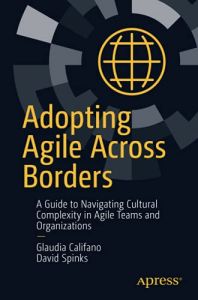Зарегистрируйтесь на getAbstract, чтобы получить доступ к этому краткому изложению.

Зарегистрируйтесь на getAbstract, чтобы получить доступ к этому краткому изложению.
David Spinks and Glaudia Califano
Adopting Agile Across Borders
A Guide to Navigating Cultural Complexity in Agile Teams and Organizations
Apress, 2021
Что внутри?
This case-driven guide will help you implement agile in every corner of the globe – even cultures that may appear at first glance somewhat inimical to its tenets.
Recommendation
Agile experts Glaudia Califano and David Spinks elucidate the challenges and techniques involved in implementing agile across cultures – even if they do veer too far into cultural and national typecasting at times. The authors traveled the globe to garner insights into the application of agile in diverse, real-world contexts. Understanding the broad cultural differences between continents and countries in which you practice agile – either on-site or virtually – will help you assemble agile teams with the right ingredients to succeed anywhere, while avoiding cultural faux pas.
Summary
About the Authors
Glaudia Califano began working in agile teams in 2005. David Spinks became a scrum master in 2012 and has led agile teams since.

















Comment on this summary